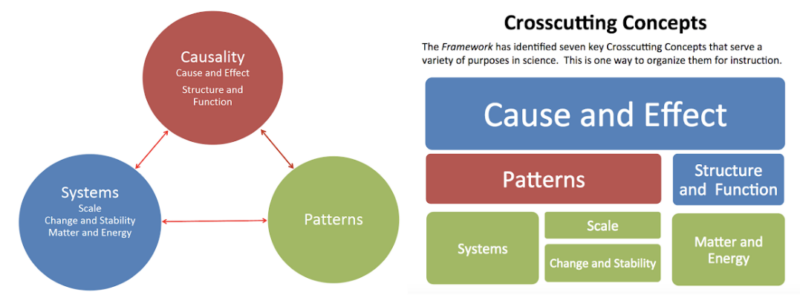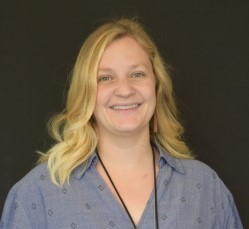Do you ever have a hard time conceptualizing the three dimensions of the Next Generation Science Standards? There’s no question that the three dimensions of the Next Generation Science Standards (NGSS) take a bit of getting used to. Between the disciplinary core ideas, the science and engineering practices, and then the crosscutting concepts, it all can seem somewhat overwhelming. While compartmentalizing these concepts can help make them more accessible, this solution might be making more work for yourself and making the three dimensional framework more confusing for our students. Rather, it might be more advantageous to look at the framework as a whole. Let’s use the crosscutting concepts (CCCs) as the entry point.
For myself, it took some time to research, study, and consult with some of the veterans of NGSS, before I developed a better understanding of where and when to use the CCCs.
What are the CCCs? According to the Council of Chief State School Officers (CCSSO) they are the structure that allows both students and teachers a way to organize and unify the science disciplines. One way that the CCSSO suggests to use the CCCs as the entry point is by organizing them by function (see below).

Figure 1. Figure 2.
Both of these figures show an emphasis on the CCCs when developing your curriculum and one might make more sense than the other. If you look at figure 1, you might be setting your units in relation to the CCCs rather than the DCI’s. By doing so, it may be easier for your students to connect the dots. The crosscutting concepts are the bases of human nature. How do we draw connections between things? Why do we ask questions? How do we formulate ideas in our head? For the most part, we do so through causality, systems, and patterns. Try putting all subjects that deal with causality together, then follow up with systems, and finally patterns. It could create the scaffolding you need.
Another way to design your curriculum using the CCCs is to design each unit flow by incorporating the majority of the CCCs in each one. For example, start with cause and effect — the why and how — then, identify patterns. From there, determine the structure and function. Describe the systems. Identify scale, change, and stability. Finally, determine the matter and energy involved. By creating this context for our students, we help create consistency. This might be more helpful in the secondary classroom where specific courses are designed using the DCIs.
We know that things in the science classroom are looking a little bit different. There’s no formal classroom at all– rather, we have a virtual meeting place! It can be very overwhelming to think about weaving the three dimensions into your online learning (particularly when you are still trying to hit goals and keep in mind your students mental health). We always say to start off with small shifts and shoot for two dimensions to start. Maybe you’re having a difficult time of figuring out how to help your students master the Science and Engineering Practices from afar. Try adding in some of the natural crosscutting concepts to your already established content. One resource we love for doing so is STEM Teaching Tools #41, a set of prompts to help you help your students make sense of the third dimension.
Whichever way you slice it, the CCCs, when used appropriately can be a huge asset in structuring our classrooms to prepare our students for the twenty-first century workplace. We are providing our students with a common language to be able to communicate with their future colleagues or to write the next seminal journal article on a new discovery. For more information and ideas on how to better use the crosscutting concepts, check out Phenomenon GRC Lessons and the CCSSO’s report on using the Crosscutting Concepts to Prompt Student Responses.
Stay connected! Be sure to subscribe to Down to a Science— The Official Blog of the Connecticut Science Center and follow us on social media.

Lindsey Sullivan is a Professional Learning Specialist at the Connecticut Science Center’s Mandell Academy for Teachers. Before joining the Mandell Academy, Lindsey was a high school science teacher. Currently, Lindsey supports educators as they make sense of NGSS through her facilitation of workshops offered by the Mandell Academy as well as providing coaching support in schools.



